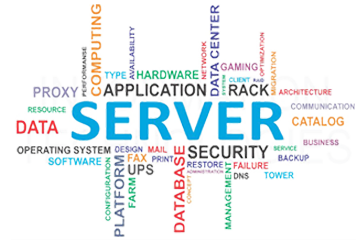
Server Migration

The maximum number of large systems being built and created from scratch, while the number of legacy systems in use is real dominating. While the functionality of existing systems remains stable, the context of new systems, such as the application environment, system level hardware and software are different. Enhancements to the functionality of the existing systems may also be required, but although the Server Migration endeavor may organized for enhancements, they should not be incorporated until after the Server Migration is realized. This allows for comparison of functionality between the existing system and the new system. The problem is that, systems currently in use, "legacy" systems, have become lacking in good design structure and code making changes to the software difficult and costly. Corporations do not want to "trash" these systems because there are many built in subtle business application processes that have evolved over time that would be wasted. Often the developers of the legacy systems are not available to verify or explain this information; the only source is the current software code. The original expense of developing the logic and components of the software systems should not be wasted, so reuse through Server Migration is desired.
Application Migration
Application migration is the most reliable and effectual method to refresh your legacy systems. The existing system is transferred to a modern and latest platform which increases the gross efficiency of the system. It is also kept in mind to maintain the fundamental core values of the existing system. obsecure from this, your application is also made secure so that your business critical data is accessible only to the decided users. Application migration is mainly conducted in four large platforms - .Net Application Migration, Java Migration, Database Migration and Oracle. Application migration has become a popular alternative rather than buying new applications. IT companies globally are providing expert migration services to help clients boost their concern.
Application Re-engineering
Re-engineering is the examination, reasoning and alteration of an existing application or software system to reconstitute it in a new form, and the subsequent enforcement of the new form. The process typically encompasses a combination of other processes such as reverse engineering, documentation, restructuring, translation, and forward engineering. The content is to understand the existing application (specification, design, implementation) and then to re-implement it to improve the system's functionality, execution or effort. The lenses are to defend the existing functionality and prepare for functionality to be superimposed after.
Migration & Reengineering Features
and Benefits
Most organizations will at some time face the problem integrating their existing systems with the Web world of universal computing while still retaining the advantage of conventional and established business models. A Server Migration services exploit customers by transforming their legacy information systems into strategic enablers that support the growing needs of their businesses. Plus, our services can aid reduce the costs of maintaining and upgrading existing applications. We offer customizable service levels to meet your organization's unique needs and goals, including coverage for different time zones.
Application migration & Server Migration services include
- Application rationalization, inventory identification, migration strategy definition, migration roadmap definition
- Port an application to a new operating system or database
- Language version, Operating System version, database version, IDE/tools version, product scripting
- Reverse engineering, partial or full redevelopment, warranty support, optional maintenance support
- Schema translation, data migration, data cleansing
- Language migration, Operating System migration, database migration, user interface migration